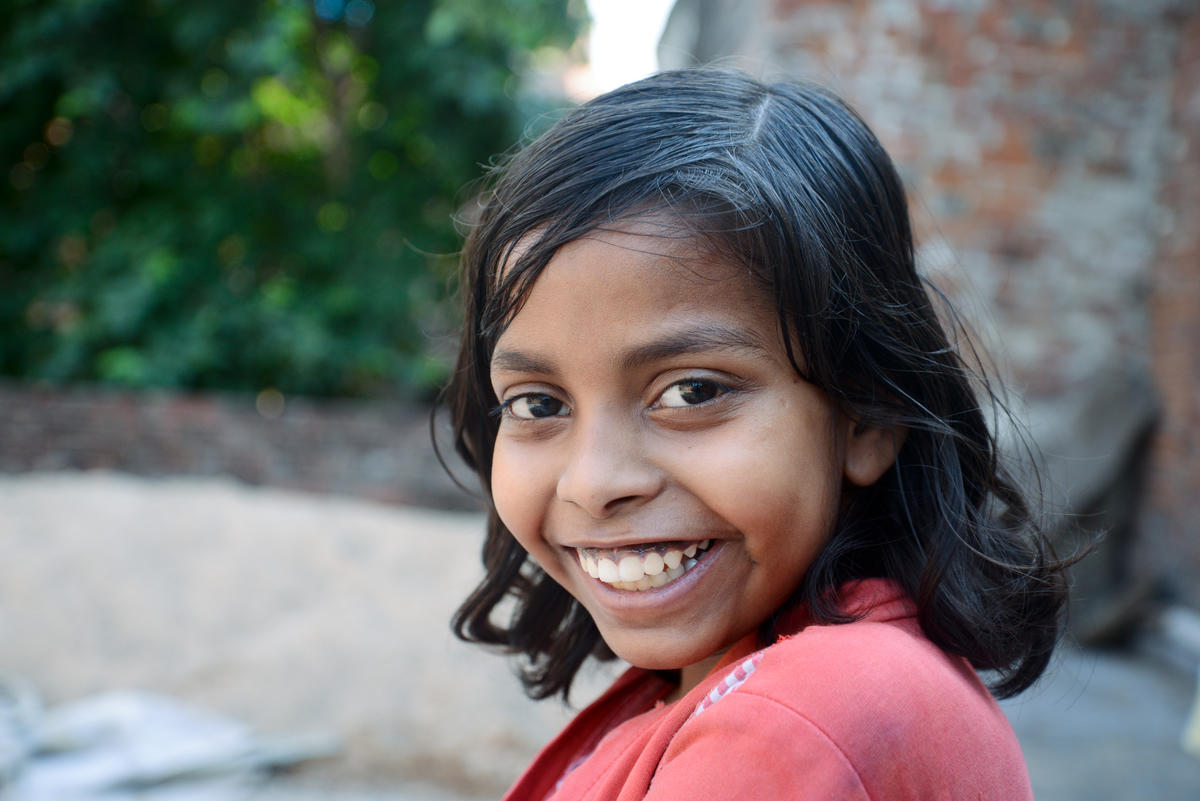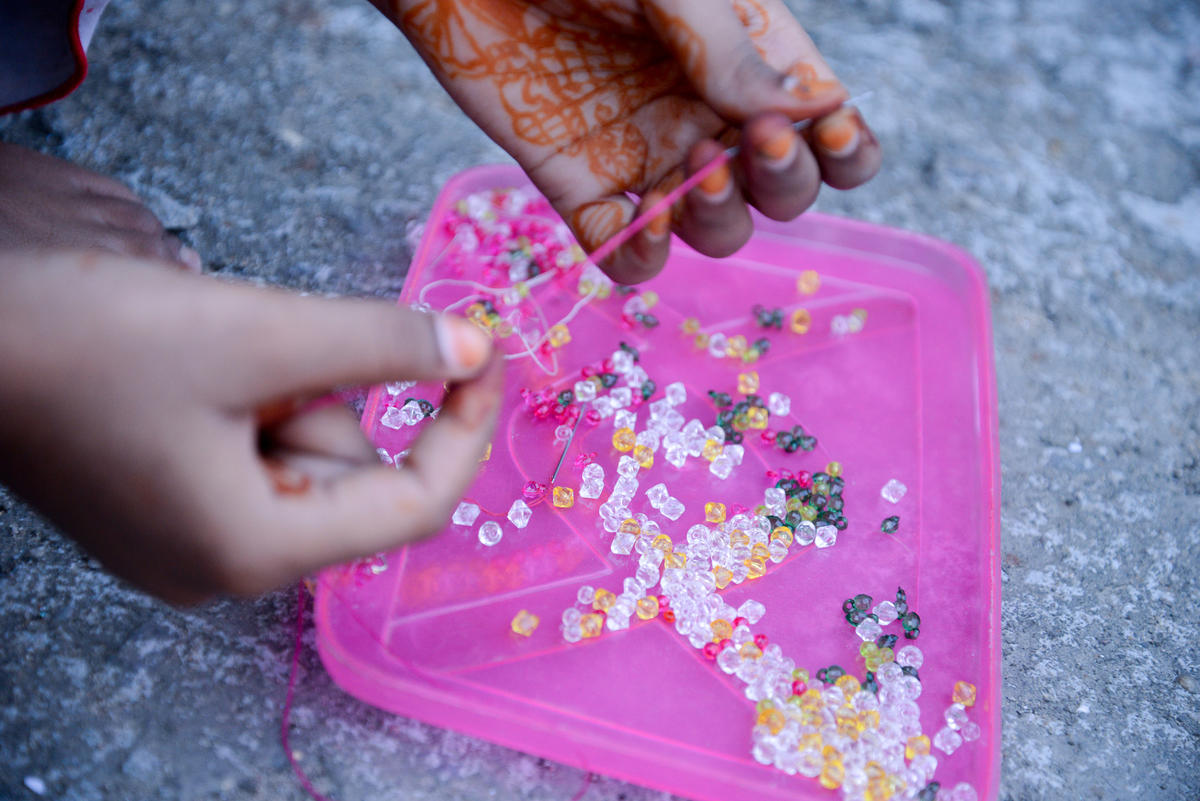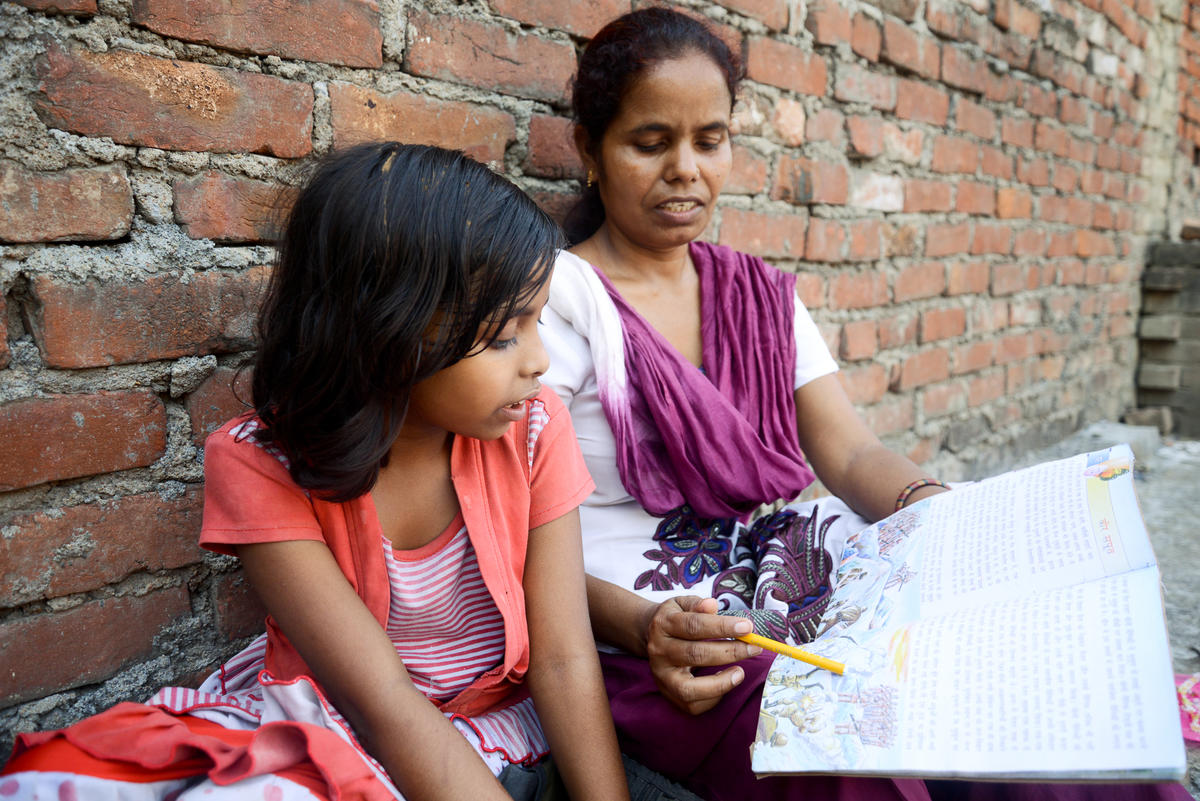
The life of a child worker
"I could make 16 bracelets a day"
Clutching a box of beads in her hand, Sonali sheepishly says, "Come, I’ll show you." Kneeling down, she opens the plastic container, revealing glittering plastic beads of pink, white, green and yellow. She takes a pink thread and, peeping through with one eye closed, runs it through the needle head first time with precision.
As she ties a knot at the end of the thread, she starts narrating the process of making a bracelet.
"Now take the needle and run it through the two beads of the same colour. Interlink them and create a pattern. This is how I made anklets and necklaces."
Working at five
Sonali was five years old when she made her first piece of jewellery. Turning a blind eye to education, Sonali’s family kept her at home, where she assisted her mother in crafting intricate jewellery.
Her father’s daily earnings of US$1.60 a day rarely went towards supporting his family of seven, instead more commonly being spent on alcohol, which he consumed in excessive amounts.
"My father was unable to work much, so there was not enough money in the house; that is why I had to help my mother make jewellery," says Sonali.

Exhibiting the items she used to make Sonali says, "My mother taught me how to make jewellery. It took me an hour to make one bracelet. I could make six bracelets in a day but chains took more time because it needed more work. So it took me two to three days to make one necklace."
Despite every drop of sweat poured out to craft each piece, the family only made US$1 dollar per day. With pittance to eat, education seemed like an unnecessary investment for Sonali’s father and a distant dream for Sonali.
"I did want to be playing and studying,” she says. “I had dreams of becoming a teacher."
An often-hidden problem
According to World Vision's community development coordinator, Chawang Shangar, occupations like embroidery work, artificial jewellery work, bamboo crafts and textile work have always been more prone to employing child labourers.
Raw materials are often delivered to homes, where the entire family participates in getting the work done. In such cases many children work from their respective homes, hidden and unidentified as child labourers by the outside world.
"Sonali was seven when we first met her. She was not going to school simply because the family did not have money to send the children to school," says Prema, a World Vision volunteer who teaches at a transit school initiated by World Vision.
Bringing Sonali to the World Vision transit school was an uphill battle, one the volunteers were ready to face head-on. The key to unlocking the doors to Sonali’s house was to empower and educate her mother first.
"The volunteers explained the importance of education. They told me that if I don’t educate my children they lose out on having a productive life,” Meena recalls. “The challenges I face because I am uneducated, they would have to face too.”
Meena decided to send Sonali and her siblings to the World Vision transit centre, where children are given basic education free of charge.
"When I first started coming to the centre I felt strange and uncomfortable,” Sonali remembers. “I was scared. There were so many children studying in the room."

Transformation
From no education, to part education and part work, to solely focusing on education, weaning off from labour was a gradual but certain process. Now 12, Sonali is in Grade 5.
Her transition from transit school to formal education centre was finally complete with World Vision enrolling her in the local school.
Beaming away she says, "I love Hindi because it has reading comprehension, phrases and proverbs. We get to write paragraphs."
Looking back at her past life, Sonali says without hesitation, "Children should study because when they grow up they can become someone big, like a doctor, teacher. Children should not work."
With constant support and encouragement from her mother, Sonali now sails through her everyday life never having to fear how her world would be without education. She is free to enjoy her childhood.
But it’s not just Sonali who has benefited: inspired by her daughter’s courage, Meena has developed a passion for social justice. Now a confident, driven and feisty lady, she has linked herself with other local organisations to proactively fight against domestic violence and encourage women’s empowerment.
"Before, I never stepped out of my house. Being part of various meetings and awareness programmes run by World Vision gave me the confidence to speak out and not to tolerate injustice. Now I have a voice and an opinion," Meena says.
Thank you to all of our supporters and advocates who have helped changed the lives of so many child labourers, like Sonali, around the world. These children are now living free from fear of a life without education.
